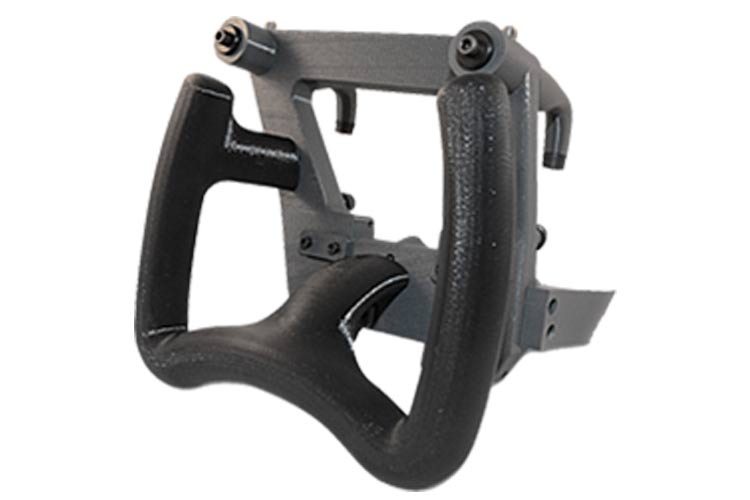CAD/CAM technology has been catering to the industry since the late 1990s. Initially companies were hesitant to adopt these technologies and perceived them to be a tool that only big MNCs could afford. However, the perception has changed now. Today there is more awareness about these technologies and the value they add in robust product design engineering and manufacturing processes. Hence, these tools have become extremely popular, even among the SMEs and are no more looked at as a luxury for the MNCs.
Today most of the companies that are into product design and engineering have atleast a basic CAD set-up in house that facilitates them to either create or make modifications in the product design. Hence, 3D modelling software is very easily found in the R&D labs of SMEs as well. However, CAE is still trying to make its way into the market. Although the awareness of this technology is fast being comprehended by the industry, but is not yet very widely used. The fact that these tools require trained manpower and slightly higher R&D budget acts as a drawback when it comes to some SMEs. But for limited usage, they can always outsource and avail the services of an engineering services partner.
Rapid prototyping technology that is critical in physical product design validation is also witnessing demand in the Indian engineering industry. It helps designers identify functional and ergonomic errors which can go unnoticed in the virtual product design simulation. But again, because these technologies are little hard on R&D budgets, SMEs need to think twice about making them a part of their R&D set-ups. But as the Indian industry realises the fact that adopting latest technology will help them fight the growing competition and deliver good quality work in lesser time and costs, these technologies have now become a necessity rather than just ‘good to have’.
Challenges in CAD/CAM industry
Availability of trained man power is one of the biggest challenges in this industry. Engineering students are exposed to very basic and preliminary understanding of the CAD and CAE software functionalities and feature and lack the understanding of how they can apply this knowledge when exposed to the industry. There is a shortage of people possessing relevant, in-depth and holistic understanding of these technologies and their application. Companies hence have to invest lot of time, money and resources in making them job ready. This slows down the productivity.
Another challenge is the traditional mindset and reluctance or aversion to adopt the technology due to the fear of having to learn how to operate it, or maybe because they are threatened that technology will become indispensible and render them expendable.
The costs involved in adopting these technologies also poses as a challenge. All the premium, and high end technological solutions are expensive and sometimes the SMEs do not have that high a budget required to invest in that level of infrastructure development.
Latest developments and offerings in CAD/CAM/CAE and PLM technologies are:
 Direct Digital Manufacturing: This high end rapid prototyping technology from Stratasys enables designers to create complex parts/products using FDM (Fused Deposition Modelling) technology, that can be used as products for end use. FDM technology has been patented by Stratasys. If a company does not have to mass manufacture a product, but still needs to create an equally good quality product for end use, they can use this machine to create it. FDM can help manufacture organically shaped tools, jigs, check gauges and fixtures for assembly processes.
Direct Digital Manufacturing: This high end rapid prototyping technology from Stratasys enables designers to create complex parts/products using FDM (Fused Deposition Modelling) technology, that can be used as products for end use. FDM technology has been patented by Stratasys. If a company does not have to mass manufacture a product, but still needs to create an equally good quality product for end use, they can use this machine to create it. FDM can help manufacture organically shaped tools, jigs, check gauges and fixtures for assembly processes.
Digital Manufacturing Solutions: This software tool enables companies to virtually create production plant simulations that best 
optimises and configures work flows, assembly lines, robotics and even considers ergonomics. This reduces time and material wastage to a great extent as well. Ergonomics study also helps incorporate necessary safety requirements and maintain healthy standard of working conditions in the production facilities. It can be used to design plants right from the start, or can be even used to modify designs of the existing plants. This technology is fast catching up in the manufacturing industry
 PLM: Product lifecycle management in its wide purview includes all the process and stages that go into product development, right from product designing, simulation and analysis, to production by configuring optimised workflows and processes that can shorten design and development cycle; reduce time, material and cost wastage; and thus enhance overall efficiency and effectiveness of the product design and development department.
PLM: Product lifecycle management in its wide purview includes all the process and stages that go into product development, right from product designing, simulation and analysis, to production by configuring optimised workflows and processes that can shorten design and development cycle; reduce time, material and cost wastage; and thus enhance overall efficiency and effectiveness of the product design and development department.
Product Design Optimisation: There are certain tools in the market that facilitate designers to optimise product design in such a  way, that it reduces the weight of the product, yet enhances its strength. It basically highlights the areas in product design that might contain excess material and removal of which might not compromise on the quality of the product, and at the same time, if applicable, might even highlight the areas in the design which might use some material which can enhance the strength of the product. It basically reduces on the consumption of the material and ensures that the material is being added in the right areas in right quantities where it is utmost essential to retain the desired quality and strength of the product. It drastically enhances the product design and functional quality and robustness.
way, that it reduces the weight of the product, yet enhances its strength. It basically highlights the areas in product design that might contain excess material and removal of which might not compromise on the quality of the product, and at the same time, if applicable, might even highlight the areas in the design which might use some material which can enhance the strength of the product. It basically reduces on the consumption of the material and ensures that the material is being added in the right areas in right quantities where it is utmost essential to retain the desired quality and strength of the product. It drastically enhances the product design and functional quality and robustness.
Market Scenario
Various surveys, studies and reports have indicated that Engineering Services in India is going to grow manifolds in the years to come. It might make India a global R&D centre for many companies and even the outsourcing of engineering services to India will go up. This has brought CAD/CAM industry into big prominence and limelight.
Many companies are making the most of this opportunity and investing in building the necessary infrastructure to support, match, augment and benefit from this growth. e.g. there will be a rise the demand of trained manpower in CAD/CAM and CAE technology, which will significantly increase job opportunities in the country and hence resulted into the rise of CAD/CAM/CAE training centres. Students should take a wise decision of selecting a centre by thoroughly checking the quality of courseware, teaching methodology, recognition in the market etc. This will also increase employment opportunities in the country and students who read this trend early and prepare themselves accordingly will benefit.
Also there is a rise of companies providing engineering services. Various CAD/CAM/CAE and PLM technology vendors and developers are flooding the markets, giving consumer companies wide range of choice and options to choose from after carefully evaluating their needs and requirements and matching them with the software that can best support their engineering initiatives.
Just like the IT boom, product engineering might just be the next big thing.
About AUthor
 Sanjay Daga, Executive VP – Sales, DesignTech Systems Ltd
Sanjay Daga, Executive VP – Sales, DesignTech Systems Ltd
PS: Image courtesy have been mentioned with the images


